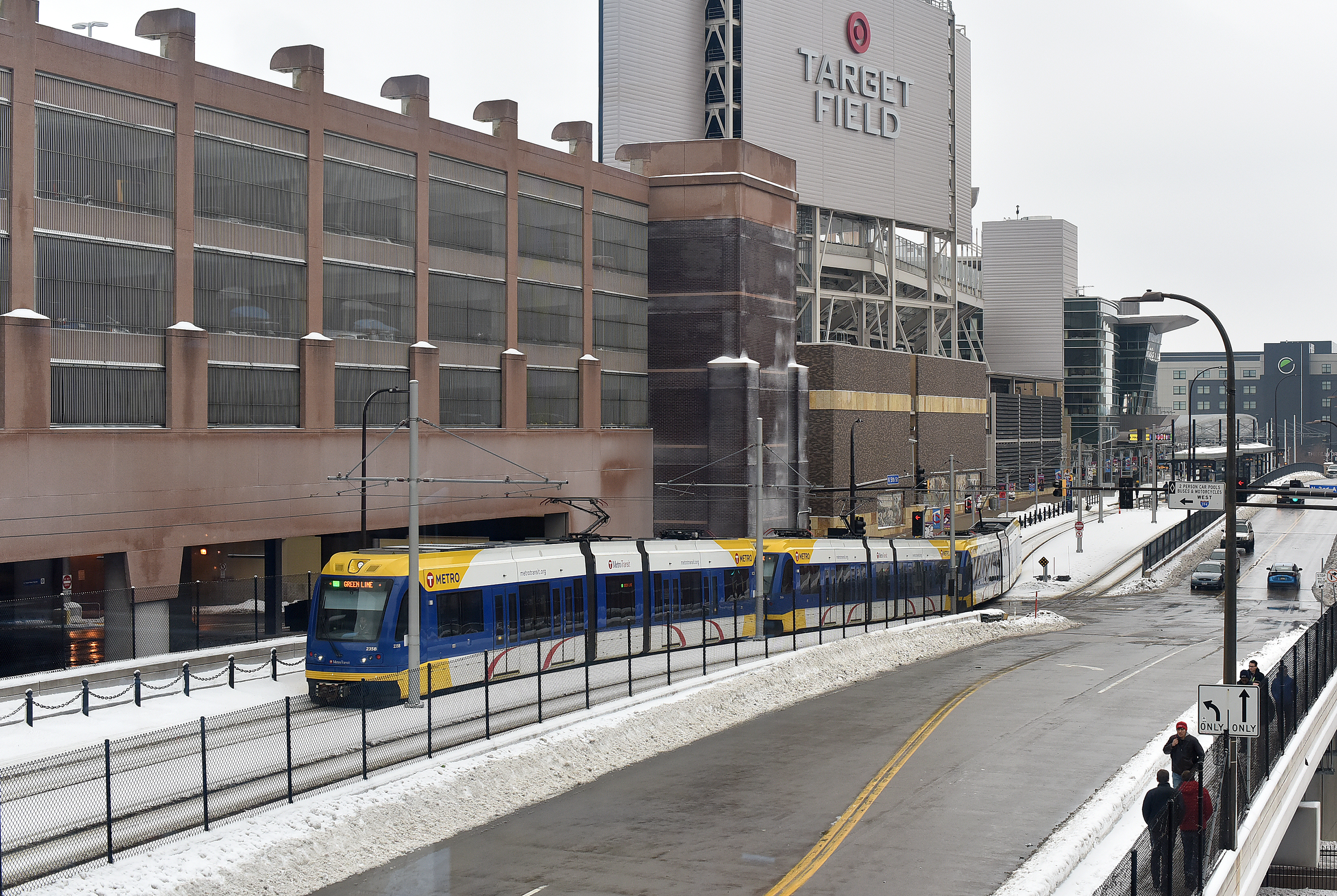Target Field

When the Minnesota Twins decided to build its new ballpark in downtown Minneapolis, the existing transportation infrastructure, including interstates 394, 35W and 94, was a big draw. The MnDOT-owned ABC ramps, public transit services including bus, commuter rail and light rail and the Cedar Lake Bike Trail were also advantages for the Twins to build in the downtown core.
The ballpark was built without adding any public parking space to existing inventory, which included the ABC Ramps’ 6,500 spaces.
Public Private Partnership
Public and private entities came together in an unprecedented way to better serve baseball fans and maintain mobility for downtown Minneapolis commuters.
Partners included:
- Minnesota Twins
- Minnesota Ballpark Authority
- Hennepin County
- MnDOT
- Metro Transit
- City of Minneapolis
- Minneapolis Warehouse Business District Association
- Target Center/Minnesota Timberwolves/Lynx
All the partners promoted the available transportation options and fans responded, leading to:
- Effective movement of people
- Improved safety
- Positive economic impact on the neighborhood
- Accessibility for all fans
Fans use their multimodal transportation choices
Fans use all transportation options possible to get to the games. Here’s a breakdown of how some of the 40,000 fans get to the 80-some home games:
- Metro Transit has 25 percent transit ridership mode share.
- Between 300 and 500 bicyclists ride to each home game.
- Approximately 120 charter buses are accommodated in existing facilities and the Hiawatha light rail line and Northstar commuter rail line both end at Target Field.
- People also walk to Target Field from hotels, places of employment, residences and other nearby parking locations.
When the ballpark opened in 2010, all three ramps filled for the first time during weekday, daytime games.
Ramp improvements for Twins
Since the ramps were originally built as commuter facilities, with staggered entrance and exit times, they were not originally capable of handling the vast number of vehicles coming in and out of the ramps because of the major league baseball stadium.
To address those challenges, MnDOT used $17 million of its parking revenues to make ramp improvements, including:
- New street-level entrances, including one on the entrance/exit to Ramp B on 2nd Avenue
- A new skyway connection from Ramp A to the ballpark to address ADA and safe pedestrian access
- New automated gate equipment, which enables credit card payment
- Charter bus lobby renovations, including amenities for transit and bicycle users
- Updated directional signs in and on the ramps, the skyways and on the freeway system and city streets
- New elevators
The ramps are empty 30 minutes after games due to coordinated efforts with the city and these ramp improvements.
How Target Field benefited the ramps
- The increase in event parking allowed underused ramp space to be put to use. Most baseball games are on the weekends and evenings, when most downtown workers are not using the parking ramps.
- Adjustments in operations and fees improved the efficiency of the ramps usage, allowing the structures to still achieve their original mission of reducing congestion, single occupancy vehicle use and emissions.
- Revenue for Twins’ games parking now represents about 30 percent of the total annual ramp revenue.
